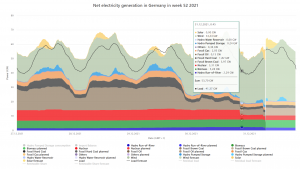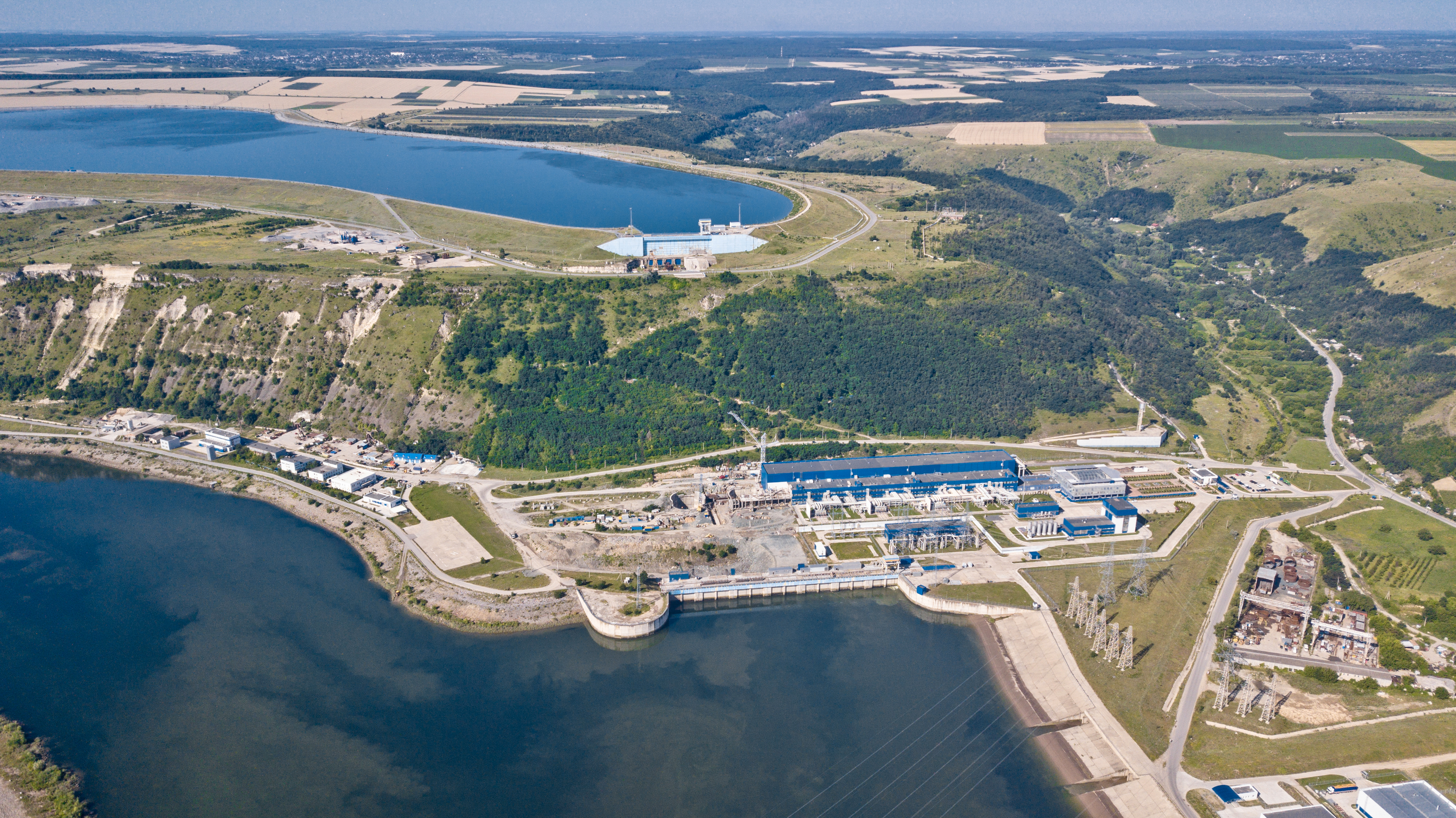News and Advertisement
What happened to the power outage in Central Asia
In Kazakhstan, Kyrgyzstan and Uzbekistan, united by one power system, there was a large-scale power outage.
KEGOC (Kazakhstan Electricity Management Company) said that there was a significant emergency imbalance created by the Central Asian power system.
“Due to the significant emergency imbalance created by the Central Asian power system (Uzbekistan, Kyrgyzstan), there was a sketch of capacity for the transit of 500 kW of electricity (maybe kV?)” North-East-South Kazakhstan “, – the company said.
According to her, as a result, there was an emergency division of transit “North-East-South Kazakhstan” with the repayment of a significant part of consumers in the Southern zone of Kazakhstan. The limit is about 1,500 megawatts.
01/25/2022
Oleksandr Udovenko: Through cyber attacks Ukrainians may run out of light and money
Following a cyber attack on a number of government websites, including the Foreign Ministry, the Ministry of Education and Science and others, US experts warn of possible more serious attacks that could leave Ukrainians without electricity, heat and money. This was reported by UNN with reference to Reuters.
Reuters in the article “Without light, without heat, without money – this is life in Ukraine during the cyber war” warns that hackers can prepare more serious cyber attacks on critical infrastructure.
“As tensions rise, we can expect more aggressive cyber activity in Ukraine and possibly elsewhere. Possibly including destructive attacks targeting critical infrastructure. Organizations need to start training, ”said John Haltqvist, an intelligence analyst at US-based cybersecurity company Mandiant.
The agency notes that hackers’ intrusions into hospitals, energy companies and the financial system have been rare until recently. But organized cybercriminals, many of whom live in Russia, have been aggressively harassing institutions over the past two years with extortion programs, data freezes and computer equipment needed to care for hospital patients.
“In December 2015, the first cyber attack of its kind killed 225,000 people in western Ukraine, and hackers also sabotaged electrical distribution equipment, making it difficult to try to restore electricity,” the article said.
According to officials, in the last two months of 2016, hackers attacked Ukrainian government agencies about 6,500 times. Then the government stated that Russian special services were waging a cyber war against Ukraine.
“The attack on the State Treasury stopped its systems for several days, which means that civil servants and retirees could not receive salaries or benefits in time,” the article said.
Thus, experts consider attacks on Ukraine’s energy system as the first example of hackers shutting down vital energy systems that provide heat and light to millions of homes.
On the night of January 13-14, a number of government websites, including the Ministry of Foreign Affairs, the Ministry of Education and Science and others, were hacked.
The websites of the Ministry of Foreign Affairs and the Ministry of Energy, the SES and the Ministry of Education and Science did not work. The media reported that the CMU website was also blocked, but as of 8:30 am, access to the government website was open. The site “Action” also “lay”.
The attackers posted provocative messages on the main pages of these sites. At the same time, the statement of the hackers themselves, which claims that “all your personal data has been uploaded to the general network”, is being spread on the Internet.
The work of the attacked state resources has already been restored. The content of the sites remained unchanged, and the leakage of personal data did not occur, other sites will resume work in the near future, according to the SBU and the Ministry of Finance.
01/15/2022
Shutdown in Germany

The shutdown of 3 nuclear power plants in Germany happened tonight.
From 6.79 GW went to 3.31 GW. Due to the very windy weather, everything is easily compensated by the generation of windmills. The shutdown was part of a plan to abandon nuclear power altogether.
12/31/2021
The fourth unit of the Dniester PSP was put into operation
Energy Day was celebrated by the country’s largest hydropower company, Ukrhydroenergo, with the commissioning of the fourth Dniester PSP hydroelectric unit. An additional 324 MW of scarce balancing capacity will enrich the country’s United Energy System, increasing its resilience and reliability.
Thus, the total installed capacity of the Dniester PSP reached 1296 MW in generator mode and 1684 MW in pump mode.

According to the project, the plant will consist of seven hydraulic units with a total capacity of 2268 MW, which puts it in first place in Europe and sixth in the world.
It should be noted that the commissioning of the fourth hydro unit reduces the number of starts of TPP units, which in turn will save coal and gas, as well as contribute to the decarbonization of the Ukrainian economy.
12/22/2021
In China, commissioned HTR-PM is the world’s first new generation
The Chinese company CNNC reported that the HTR-PM demonstration reactor was connected to the country’s power distribution system on December 13. The new reactor became the world’s first high-temperature reactor with gas cooling and a pebble layer, built in a new generation of such plants.
Construction of the HTR-PM demonstration plant with two 250 MW reactors began in December 2012. The twin reactors will run one 210 MW turbine. Cold functional tests to test the reactor circuit system and equipment, as well as the strength and tightness of the auxiliary pipelines under pressure were completed at two HTR-PM reactors on October 19 and November 3, 2020. Hot functional tests simulating normal temperatures and pressures began in January 2021.
On August 20, China’s nuclear regulator, on behalf of the National Nuclear Security Administration, issued an HTR-PM license. The loading of the first spherical fuel cells into the first reactor began the next day. The first HTR-PM reactor reached its first critical level on September 12, and the second on November 11. Two days later, the reactors began to emit the first electricity into the system.
It is proposed to build another 18 such blocks for the Shidaovan site. In addition to the HTR-PM, China is offering a larger version called the HTR-PM600, in which one large 650 MW turbine will be powered by about six HTR-PM reactors. Feasibility studies for the implementation of the HTR-PM600 are being conducted for five Chinese nuclear power plants.
Such reactors have recently been recognized by the British authorities as promising for the development of the country’s nuclear industry and will appear as the first demonstrator in about 10 years.
Earlier it was reported that in 15 years China plans to build 150 new nuclear reactors
12/17/2021
Tim Conway: Ukrainian nuclear power plants are not threatened by cyber attacks
Today, Ukraine’s nuclear energy provides 55% of the country’s electricity needs and is therefore also a potential target for cyberattacks.
We asked American expert Tim Conway, technical director of ICS and SCADA programs at SANS, how this critical infrastructure is protected and whether there is a request for advice from the Ukrainian side.
It will be recalled that in early December, Ukraine hosted exercises on cybersecurity of Grid NetWars critical infrastructure, scripts for which were created by SANS Institute – the world’s leading organization that trains, develops and certifies cybersecurity professionals.
“In the nuclear sector, the focus is primarily on the physical protection and isolation of the facility. At the same time, power generation and transmission systems are mainly focused on cybersecurity. There are many international standards and legislation that apply to the nuclear industry, said Tim Conway. – During the cybersecurity exercises in the United States, Poland and Ukraine, we invite representatives of the nuclear industry. But the settings of the internal networks of nuclear power plants are unique. Transport infrastructure operators must join a common network to be able to operate. This is not necessary in nuclear energy. The NPP network can be isolated and work on its own. ”
Herman Bogapov December 9, 2021
“This is a remarkable, truly epoch-making event. Now it is no exaggeration to say that the Zaporizhzhya NPP provides a historic maximum of electricity for the needs of the population and industry of Ukraine, “- commented on the event. Director General of Zaporizhzhya NPP Dmytro Verbytsky.
Such production was made possible by Energoatom’s implementation of a large-scale project at the Zaporizhzhya NPP, which is extremely important for the entire energy sector of Ukraine. The company, as the largest producer of electricity in the country, also takes care of the stability and reliability of the integrated power system.
After the expansion of the station’s open switchgear and the commissioning of the fourth 750 kV overhead line, Zaporizhzhya NPP – Kakhovka substation, six power units of the station operate without any network restrictions, now generating more than 17 million kWh of electricity daily.
The Kakhovka line has significantly improved the electricity supply of the southern region of Ukraine, and in the future will be important in synchronizing the Ukrainian power system with the European one.
Zaporizhzhya NPP operates reliably, safely, 100%.
12/02/2021